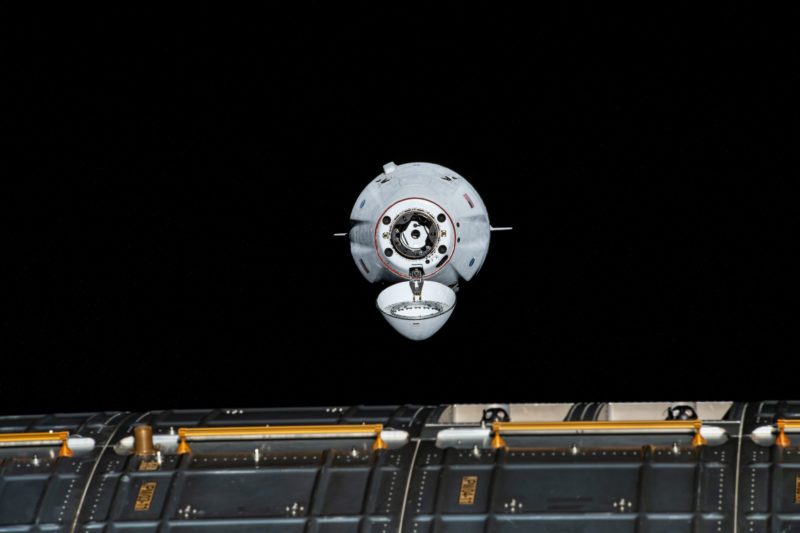
After a month spent moored at the International Space Station (ISS), SpaceX’s CRS-23 Dragon cargo ship has begun its journey back to Earth. The unpiloted craft undocked from International Docking Adapter (IDA)-2—located on the forward-facing end of the station’s Harmony node—at 9:12 a.m. EDT Thursday and is due to splash down off the Florida coast later tonight. Returning home aboard the Cargo Dragon is an estimated 4,600 pounds (2,100 kg) of scientific payloads and experiment results from a wide range of ongoing research activities aboard the multi-national orbital outpost.
CRS-23 launched from historic Pad 39A at the Kennedy Space Center (KSC) in Florida at 3:14 a.m. EDT on 29 August. Her four-times-flown Falcon 9 booster lifted the previously-flown Cargo Dragon and 4,800 pounds (2,200 kg) of payloads, equipment and supplies for the incumbent Expedition 65 crew smoothly into low-Earth orbit, to commence a day-long chase of the ISS. Thirty-one hours later, at 10:30 a.m. EDT on the 30th, CRS-23 docked at IDA-2, as the station orbited 260 miles (420 km) over Western Australia.
Although the rendezvous and docking profile was nominally autonomous, Expedition 65 astronauts Megan McArthur and Shane Kimbrough closely monitored the proceedings from the station’s multi-windowed cupola, ready to assume control if needed. The duo had earlier completed On-Board Training (OBT) for rendezvous operations and participated in extensive cargo reviews and conferences with ground controllers.
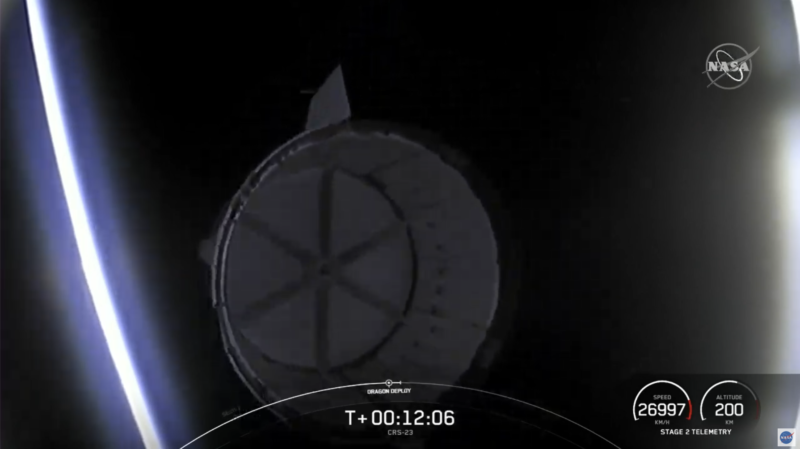
Arriving at the station aboard CRS-23 were crew supplies, science investigations, Extravehicular Activity (EVA) equipment and associated vehicle hardware. The scientific payloads included the Italian-led Reducing Arthritis Dependent Inflammation First Phase (READI FP), which seeks to understand the effects of microgravity and space radiation on the growth of bone tissue.
It investigates whether bioactive metabolites—in this case, vegetal extracts generated as waste products from wine production—can better protect human bones during spaceflight.
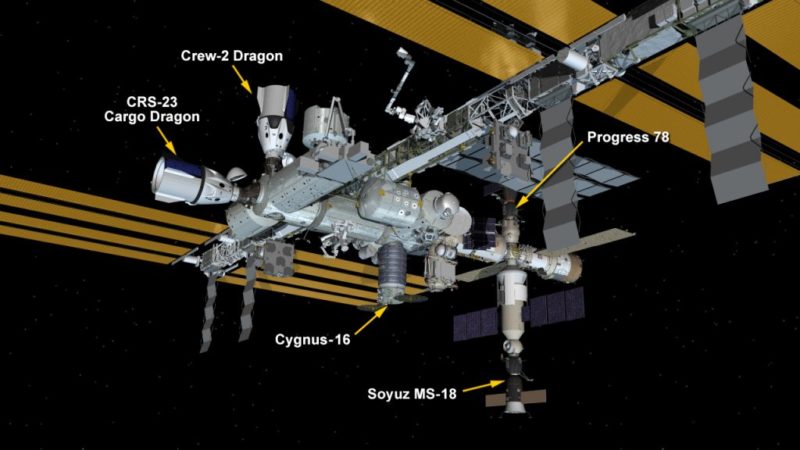
German researchers provided the Retinal Diagnostics study to capture images of astronauts’ eyes to document the well-known phenomenon of Space-Associated Neuro-Ocular Syndrome (SANS). This vision problem is known to affect over two-thirds of astronauts and is thought to be associated with missions longer than a month in duration.
NanoRacks, Inc., and Tokyo-based tech startup GITAI, Inc., supplied an experimental robot arm to be operated inside the commercial Bishop airlock, which arrived at the ISS aboard the CRS-21 Dragon last December. Results from these trials could support the development of future robotic workers to support station crews and tasks, as well as servicing, assembly and manufacturing tasks in low-Earth orbit.
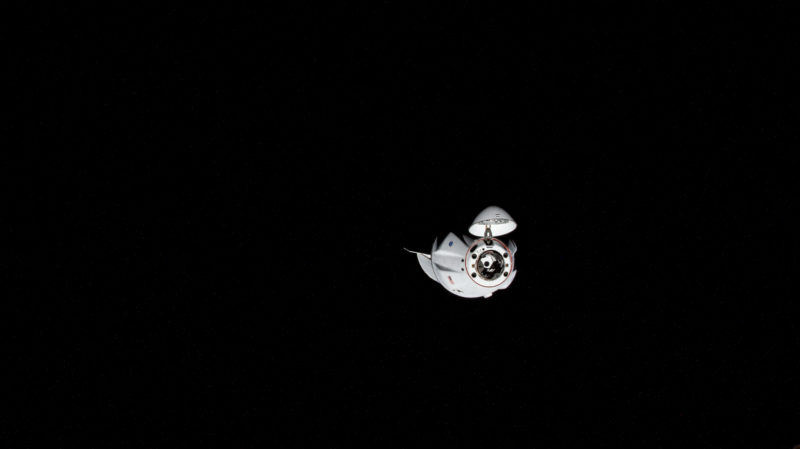
Elsewhere aboard CRS-23 was a group of materials—including concrete, fiberglass composites, thin-film solar cells, micro-optical chips and 3D printed polymers—to assess their performance in space, together with a batch of thale cress for ongoing plant studies in the station’s Veggie facility.
And the Faraday Research Facility was set to be installed in a pair of EXpedite the PRocessing of Experiments for Space Station (EXPRESS) racks to support trials of an implantable, remote-controlled drug-transfer system which might be a game-changer for long-term management of chronic conditions on Earth.
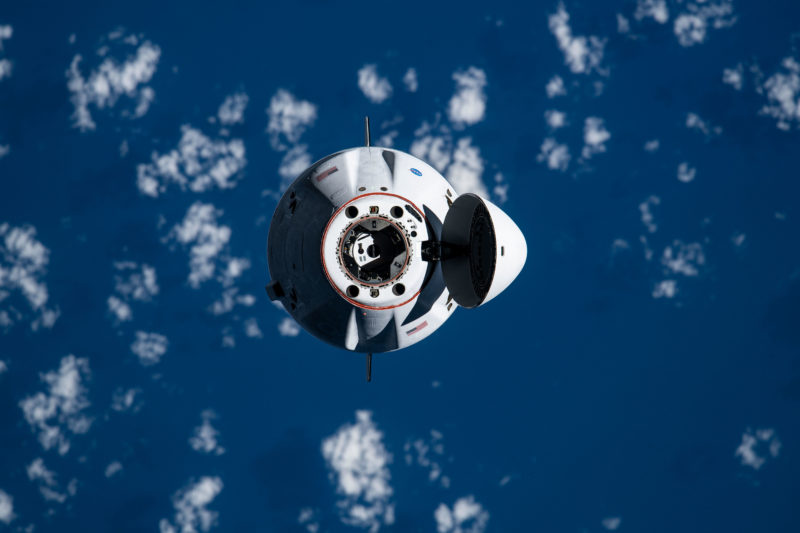
Barely two hours after docking, McArthur opened the hatch into the Cargo Dragon to begin unloading its payloads. She also installed a new NanoRacks module in support of future experiments. Elsewhere, Kimbrough and Expedition 65 crewmate Mark Vande Hei—who on Saturday will pass the midpoint of a record-setting 353-day-long ISS stay—set to work transferring research hardware and preserved samples from CRS-23 into science freezers, incubators and other locations on the station.
Kimbrough and French astronaut Thomas Pesquet moved a batch of ten female mice over from the Cargo Dragon into a temporary habitat inside the U.S. Destiny lab, where they would form part of the ongoing Rodent Research Demonstration (RR-D1) experiment to explore how microgravity aids the wound-healing process.
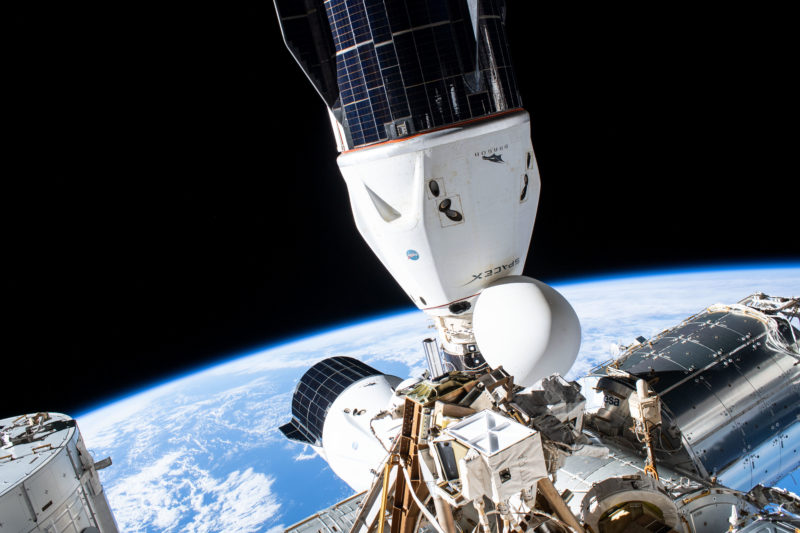
Over the next several days, Kimbrough fed the rodents and cleaned their enclosures and, with McArthur, prepared for the experiment.
All five U.S. Operational Segment (USOS) personnel—McArthur, Kimbrough and Vande Hei, together with Frenchman Thomas Pesquet of the European Space Agency (ESA) and Expedition 65 Commander Aki Hoshide of the Japan Aerospace Exploration Agency (JAXA)—participated in RR-D1, with the mice transferred into the Life Science Glovebox (LSG) inside Japan’s Kibo lab for observation on the 21st.

Meanwhile, on 14 September Vande Hei and Kimbrough removed support components inside the Cargo Dragon to release hardware for installation aboard the Destiny lab in support of the Four Bed Carbon Dioxide Scrubber (4BCO2), which launched last month aboard Northrop Grumman Corp.’s NG-16 Cygnus cargo ship.
As September passed its midpoint, the process reversed and the Expedition 65 crew shifted gears to begin packing CRS-23 for its return to Earth. On the 17th, Hoshide opened up the station’s Bigelow Expandable Activity Module (BEAM)—now entering its sixth year of operations—to remove stowed hardware which would return home aboard Cargo Dragon.
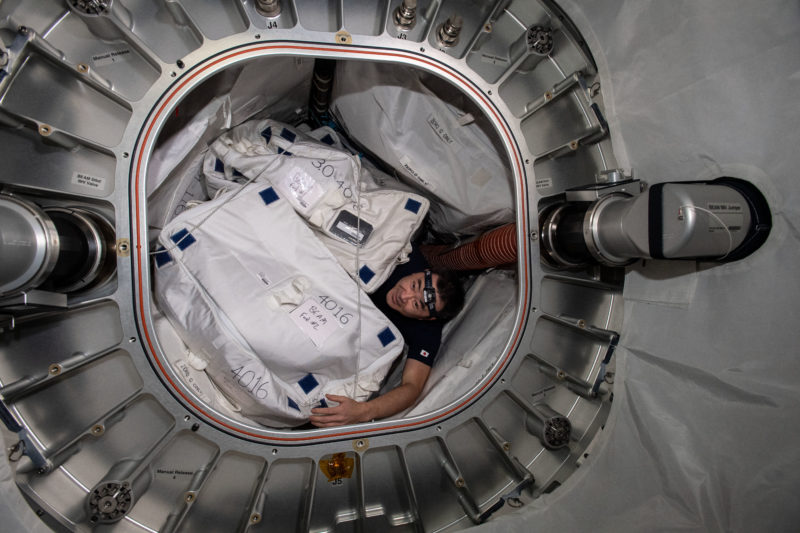
And earlier this week, McArthur began loading cargo aboard the ship and Kimbrough set to work configuring science freezers to house samples bound for Earth. Packing, in fact, continued until a couple of hours before Thursday’s undocking.
Returning home were more than 4,600 pounds (2,100 kg) of scientific experiment results, bound for eager researchers at NASA’s Space Station Processing Facility (SSPF) at KSC. This included samples from the long-running Ring Sheared Drop (RSD) experiment, which has since early 2019 sought to examine the formation and flow of abnormal proteins (called “amyloids”) in the absence of solid walls, as part of efforts to understand neurodegenerative diseases like Alzheimer’s.
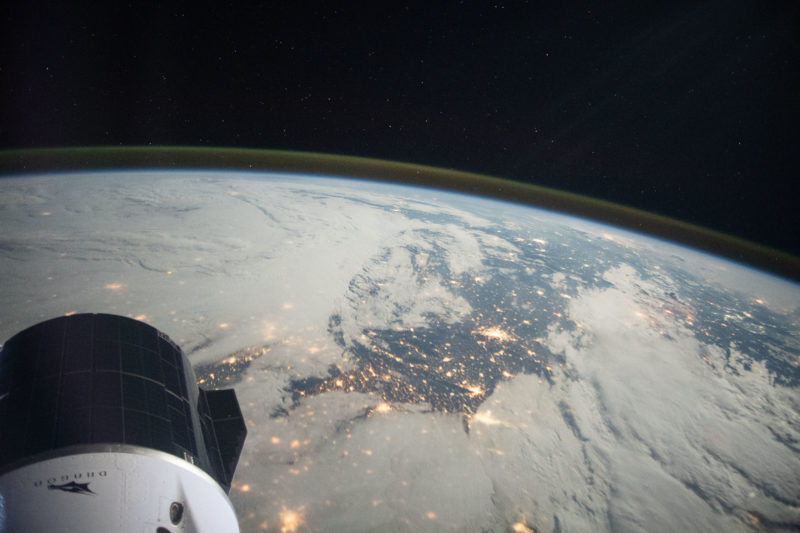
Also coming home were results from Genes in Space-8, launched last month aboard the NG-16 Cygnus, which demonstrated a fluorescence viewer to monitor the expression of genes controlling critical liver enzymes.
After 32 days in space, the Cargo Dragon undocked from the orbital complex at 9:12 a.m. EDT Thursday and conducted a sequence of separation “burns” of its thrusters to maneuver to a safe distance.
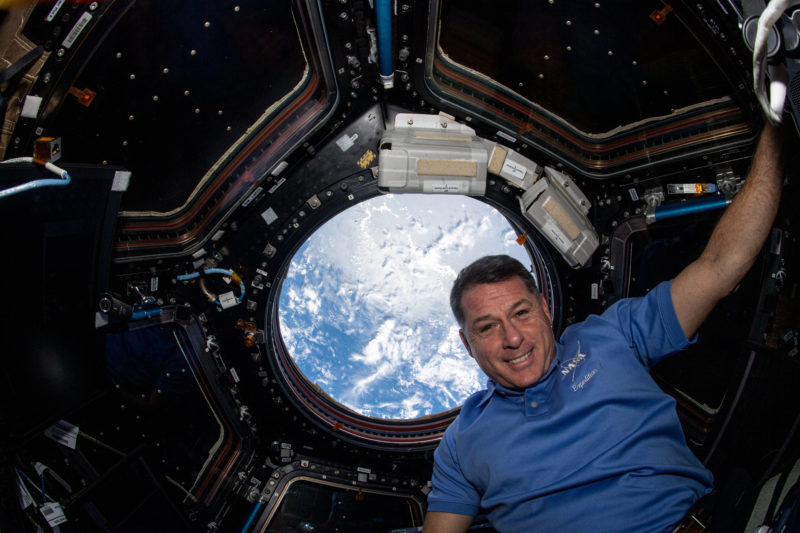
About 12 minutes after undocking, it had retreated beyond the limits of the 650-foot (200-meter) “Keep-Out Sphere” (KOS), an area around the station which acts as a collision-avoidance zone. CRS-23 will gradually widen its distance from the station, before it executes a deorbit burn later tonight, which will set up the proper conditions for a parachute-aided splashdown off the Florida Coast about 11 p.m. EDT Thursday.
The cargo ship will be picked up by SpaceX’s GO Navigator vessel to commence its return journey to shore and an expectation that science samples may reach the hands of researchers within four to nine hours thereafter. This rapid turnover is expected to pay dividends by offering scientists the chance to gather critical data with minimal losses of microgravity-induced effects.




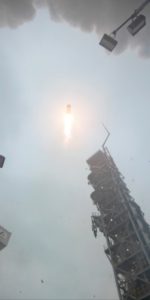
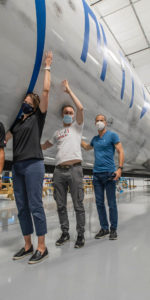
2 Comments
2 Pings & Trackbacks
Pingback:After Month at Space Station, CRS-23 Dragon Undocks, Heads Home
Pingback:Pad 39A Supports First U.S. Launch of 2022, Next Starlink Batch Lifted to Low Orbit – AmericaSpace